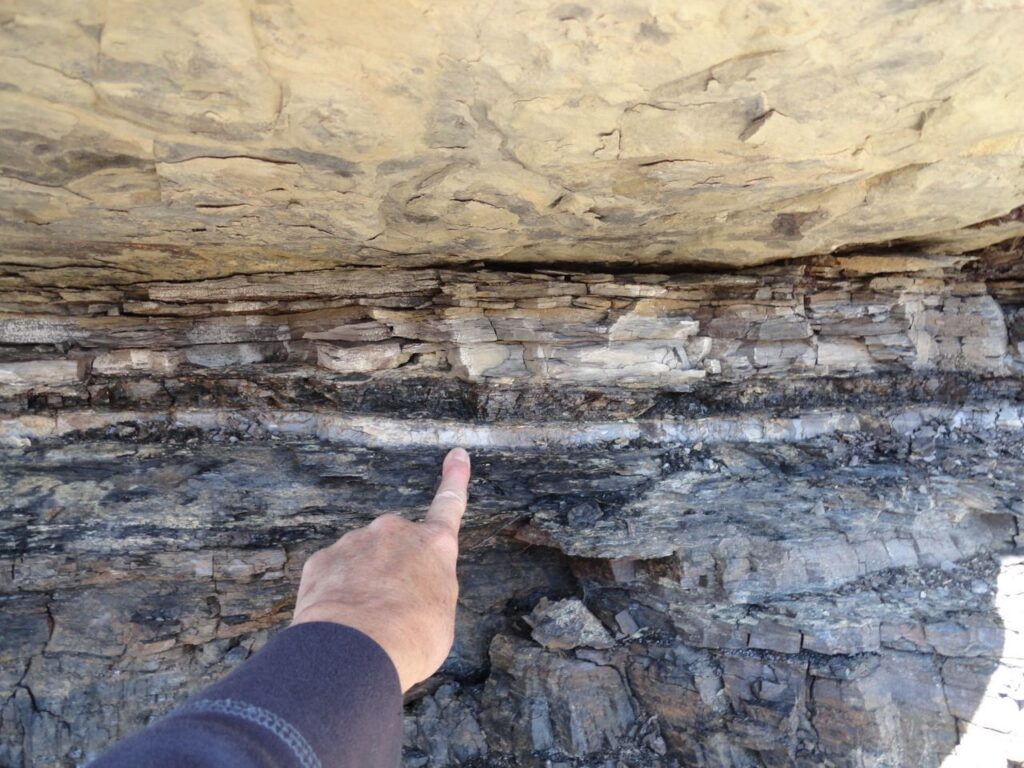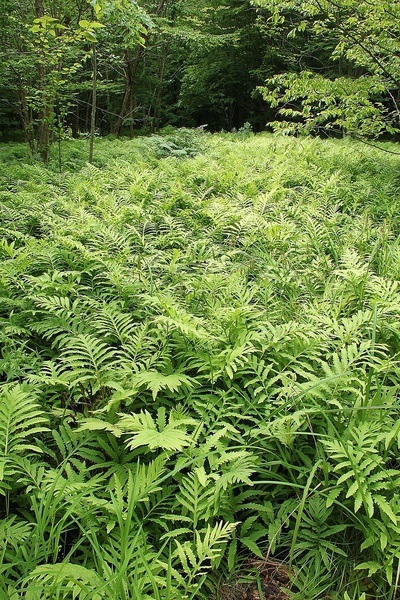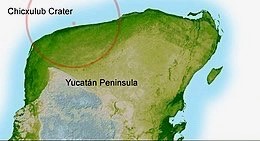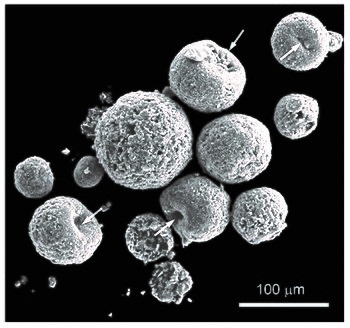Large Meteor Impacts, Part II: The Great Extinction
Today, every schoolchild has heard that a big meteor ended the dinosaur era. But this common knowledge sometimes consists of little more than an animated cartoon without supporting evidence. Let us consider the evidence and where it leads.
In 1980, the father and son team of Luis and Walter Alvarez (physicist and geologist, respectively) proposed that because Earth rocks tend to be quite deficient in the element iridium and meteorites tend to have more, a large meteorite impact should leave an iridium signature in Earth sediments deposited at that time. The Cretaceous-Tertiary (K-T) boundary with its final dinosaur fossils at Gubbio, Italy, was already well-studied, and when they tested an iridium profile there it abruptly increased right above the extinction boundary.
Other geologists of course scurried to see whether this held true at sites they had worked on, or knew about, and around the world many K-T boundary profiles did have an iridium anomaly right at or above the last dinosaur fossils. Careful study showed that some of these exposures also had soot in the iridium layer, suggesting extensive wildfires accompanied the impact.
In sites that had preserved tree and grass pollen with the dinosaur fossils, the pollen rain above the soot sometimes changed to fern spores. The interpretation that unfolded was that the clouds of dust, debris and soot so darkened the day that trees and grasses died for lack of photosynthesis and warmth, and mostly ferns thrived in the cool shade of these dense clouds.
The conviction quickly grew that if a meteor impact was large enough to be recorded in sediments around the world, it must have been at least as large as the most conspicuous large ones on the moon, like Copernicus or Tycho, and it might still be there in the rocks if it occurred on a continent. And it transpired that Glen Penfield had already been studying a novel bedrock structure. Oil company geophysicists had already located some sort of structure offshore at Yucatan, Mexico.
Structures, meaning folded and/or faulted rock, are what trap oil, and the evaluation here was that this was an unlikely trap, so the site had not been studied further for oil production. But Penfield could see that this was no ordinary anticline or syncline. Rather, it was an oddly asymmetrical depression about 60 miles in diameter with a turned up edge and with a “different” type of rock in the center. The overall diameter of disturbed rock was about 120 miles. Numerous geologists and astrophysicists began pestering Penfield for data because the site seemed to have the characteristics one might expect for a meteor impact crater.
A sample was taken from a drill ship in the center of the depression and produced a rock formed from a melt, in an otherwise sedimentary sequence. At the base of this igneous rock was a breccia of crushed sedimentary rock which contained iridium, and micro-diamonds that only form under very high pressure, plus shocked quartz who’s orderly atomic structure has been sheared atom by atom and was only known from meteorite craters and nuclear weapon blast sites. The igneous rock had melted 65 million years ago, the time already well established for the extinction of the dinosaurs in many parts of the world. By then the site had come to be called the Chicxulub crater, a local Native American name, and it was becoming convincing that this was the Alvarez crater.
Gravity studies showed the crater was asymmetrical, extending to the northwest and indicating a meteor coming in at a low angle from the southeast. This would have sprayed a fireball to the northwest across much of todays Mexico and southwest USA. Paleobotanists mapping plant extinctions found that about 75 percent of the terrestrial species native to that area became extinct at the K-T boundary, while there were almost no plant extinctions at that time in Australia and New Zealand.
Microspherules are tiny hollow glass bubbles which form when molten glass is blown through a high temperature plasma. They form today in the exhaust from coal-fired power plants when minerals in the coal melt, and they become one type of air pollution, lumped in the category called fly ash. In 65 million year old sediments in central Mexico they form much of a layer about three feet thick, in Texas about four inches thick, and in New Jersey the maximum found is two inches thick.
Most of the dinosaur species became extinct during the impact event, both the terrestrial ones and the aquatics like the mosasaurs and the plesiosaurs. At the small scale there were also many extinctions at the bottom of the food chains, including coccoliths, foraminifera, diatoms and others which form the plankton. Whole food chains unraveled, which likely killed the larger predators.
Energy modeling indicated this was an incoming bolide about six miles in diameter, and the immediate consequences probably included months of darkness worldwide in an atmosphere filled with dust, ash and aerosols, with sunlight reflecting off the outer layer; and the planet’s surface freezing in the dark.
Gypsum is a common mineral at the impact site. Chemically it is a sulfate mineral and when vaporized by the impact would be converted to sulphuric acid aerosols. Strong acid rain would have prevailed for years until nature slowly recombined it with calcium, back into gypsum.
In the meantime, the aerosols would have trapped solar energy, magnifying the greenhouse effect, and shifted the planet into overheating for years. The animal survivors in western and central North America included species of turtles, crocodiles and some fishes. Elsewhere in the world, bird and mammal species also survived.
These revelations came at a time when the U.S. and Russia were actively engaged in the “cold war,” each building enough nuclear weapons to obliterate the other, with lots of overkill. Modeling of the consequences of such an exchange indicated that there would be no winners because the supporting ecosystems worldwide would be destroyed and it would be a MAD enterprise of Mutually Assured Destruction.
While the military on both sides stayed focused on “winning,” the scientists on both sides were pointing out that the disastrous consequences were not just a theoretical modeling concept, but rather that there was already an example of worldwide ecosystem failure 65 million years ago from a huge energy release. Both sides did back off a bit, at least on the rhetoric, and somewhat on the overkill. But we are still a long ways from sanity prevailing.






